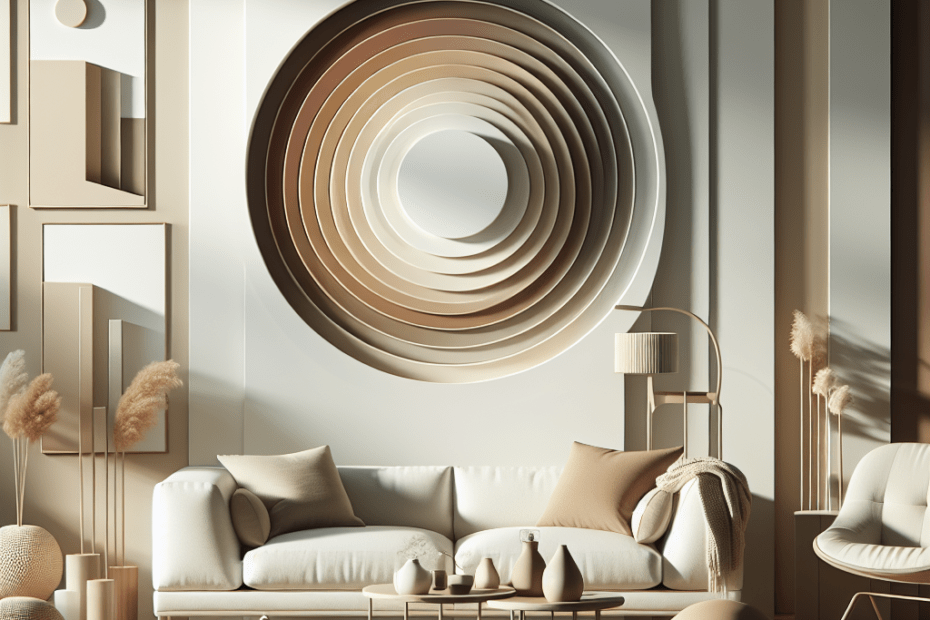“`html
The Power of Neutral Layers in Minimalist Home Decor
When it comes to creating a tranquil, timeless, and uncluttered space, many find themselves drawn to minimalism. The key component in achieving this style is through the use of neutral layers in minimalist design. These layers add depth, warmth, and sophistication to a space, ensuring the simple aesthetic never veers into cold or uninviting territory.
The Appeal of Minimalism
Minimalist design has been a popular trend for several years, embraced for its simplicity and elegance. According to a study by Statista, around 23% of U.S. homeowners have expressed interest in minimalism over the past five years. The core of this design philosophy centers around the idea of “less is more,” which often involves decluttering and focusing on essential items.
Understanding Neutral Layers
Neutral layers in a minimalist design refer to the use of color palettes, textures, and materials that create understated, yet profound spaces. These layers often include shades of white, gray, beige, taupe, and earthy tones. By carefully curating these elements, designers can transform a room into a harmonious environment that feels both cohesive and stylish.
| Element | Role in Neutral Layers |
|---|---|
| Color | Provides backdrop without visual clutter and allows flexibility in decorating. |
| Texture | Adds depth and interest through varied materials like wood, textiles, and stone. |
| Accessories | Maintains simplicity while personalizing space with minimal, thoughtful decor. |
The Role of Color in Neutral Layers
Color can significantly impact the ambiance of a room. Neutral colors like white and beige often act as a canvas, enabling other elements such as furniture and artwork to stand out. Homeowners typically prefer these shades, as they provide a sense of tranquility and expansiveness. A survey by Houzz highlighted that around 75% of individuals opting for room makeovers tend to choose neutral colors as their base palette.
Adding Depth with Texture
While neutral colors set the stage, texture brings life to the scene. Without texture, a neutral room may feel flat or sterile. Elements like soft rugs, linen drapes, wool throws, and wooden furniture introduce tactile richness that elevates minimalist design. These textures create cozy, inviting spaces without overpowering the simplicity desired in minimalism.
Functionality and Simplicity in Accessories
Accessories in minimalist spaces should reflect purpose and contribute to the room’s overall simplicity. Items like unique pottery, elegant vases, and streamlined lamps can enhance the aesthetic without causing clutter. Each piece should hold significance or offer functionality, such as a well-placed mirror that expands the room visually or potted plants that bring in natural elements.
Statistics on Home Design Trends
In the broader context of home design, embracing neutral layers is on the rise. In a recent poll, around 46% of interior designers rated neutral color palettes as their top choice for 2023, showing a clear predilection for simplicity and elegance (DesignTrends).
Key Takeaways
- Neutral layers are crucial in minimalist design, offering a backdrop for tranquility and elegance.
- Uses of color, texture, and accessories in neutrals can enhance warmth and depth.
- Minimalism embraces functionality, ensuring that every element has a purpose.
- Statistics reveal a growing preference for neutral palettes among homeowners and designers.
FAQ Section
1. What are neutral layers in minimalist design?
Neutral layers refer to using understated colors, varied textures, and minimal accessories to create a sophisticated, cohesive look.
2. Why are neutral colors popular in minimalist design?
They offer a clean backdrop that enhances simplicity and allows other design elements to emerge, creating a tranquil space.
3. How do textures add depth to neutral layers?
Textures like wood, textiles, and stone introduce tactile interest and warmth, preventing spaces from feeling flat.
4. What is the function of accessories in a minimalist space?
Accessories should offer functionality and simplicity, personalizing the space without causing clutter.
5. Are neutral palettes a trend in current home design?
Yes, neutral palettes remain a top choice for many designers seeking to achieve a minimalist look, as supported by recent design trend statistics.
“`
